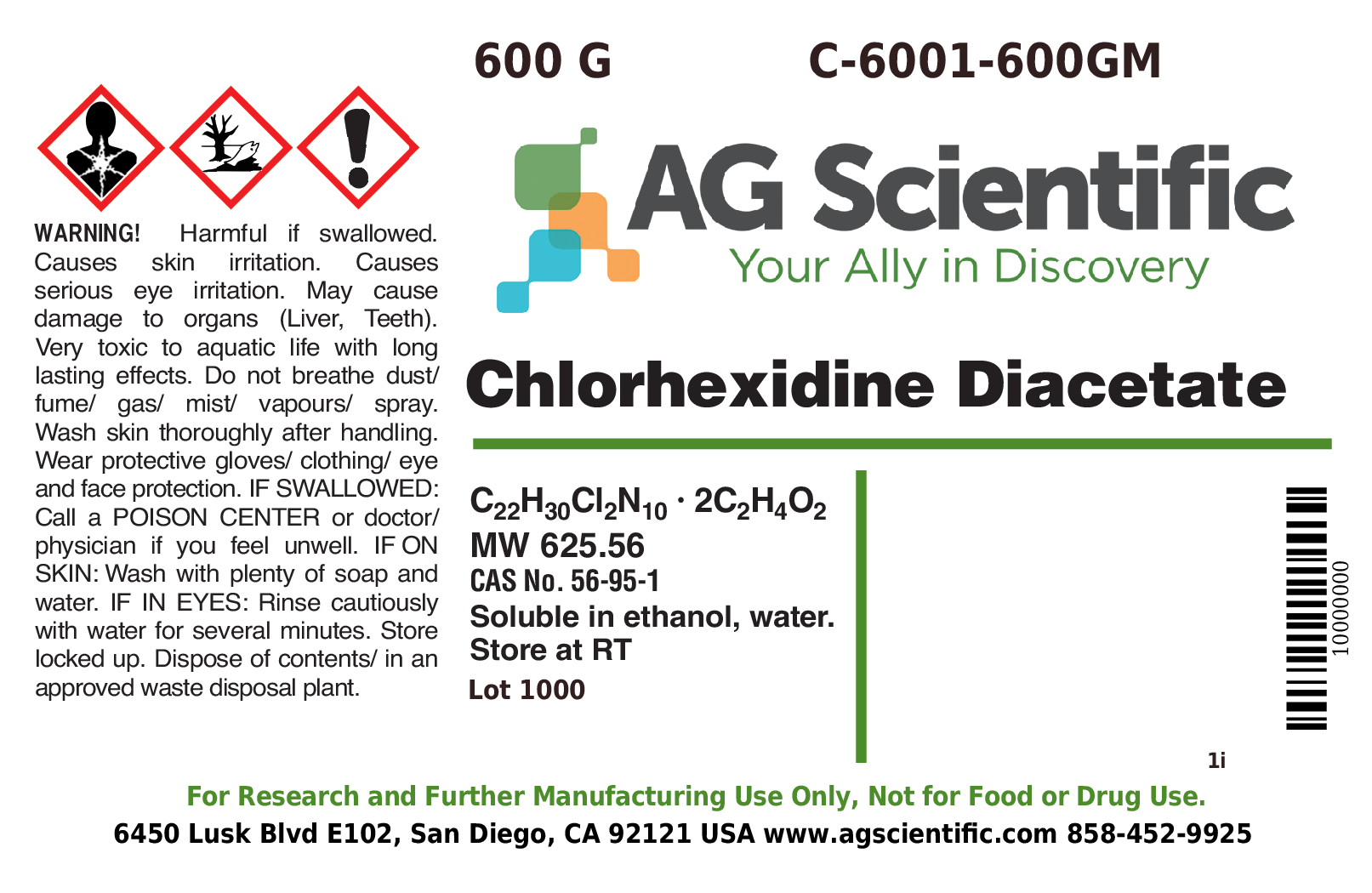Chlorhexidine gluconate; Chlorhexidine acetate; Nolvasan; Bactigras; Hibitane diacetate
56-95-1
625.5
C22H30Cl2N10 • 2C2H4O2
Ethanol, Water
Room Temperature
Chlorhexidine diacetate is a bis(biguanide) compound with broad spectrum antimicrobial properties that make it effective against both Gram-positive and Gram-negative bacteria. In solution, positively charged chlorhexidine binds to cell wall phospholipids, causing bacterial cell walls to rupture and ultimately leading to cell death. Depending on concentration, the compound may exert either a bacteriostatic or bactericidal effect.
Upon application in vitro, chlorhexidine can kill nearly 100% of Gram-positive and Gram-negative bacteria within 30 seconds. Since chlorhexidine formulations can destroy the majority of categories of microbes, there is limited risk for the development of an opportunistic infections.
Applications:
- Chlorhexidine diacetate is used regularly both as a topical antiseptic and as an antimicrobial component of mouthwash.
- Can be used to clean wounds, prevent dental plaque and treat yeast infections of the mouth.
- Used in more rigorous medical applications, both as an antimicrobial agent for preventing infection after catheterization and for disinfecting medical and surgical devices.
- Shown to be effective in inactivating human immunodeficiency virus (HIV).
- Preparation of a 0.5% chlorhexidine diacetate solution for cleansing cow teats after milking.
0.1 lbs
Research or further manufacturing use only, not for food or drug use.


